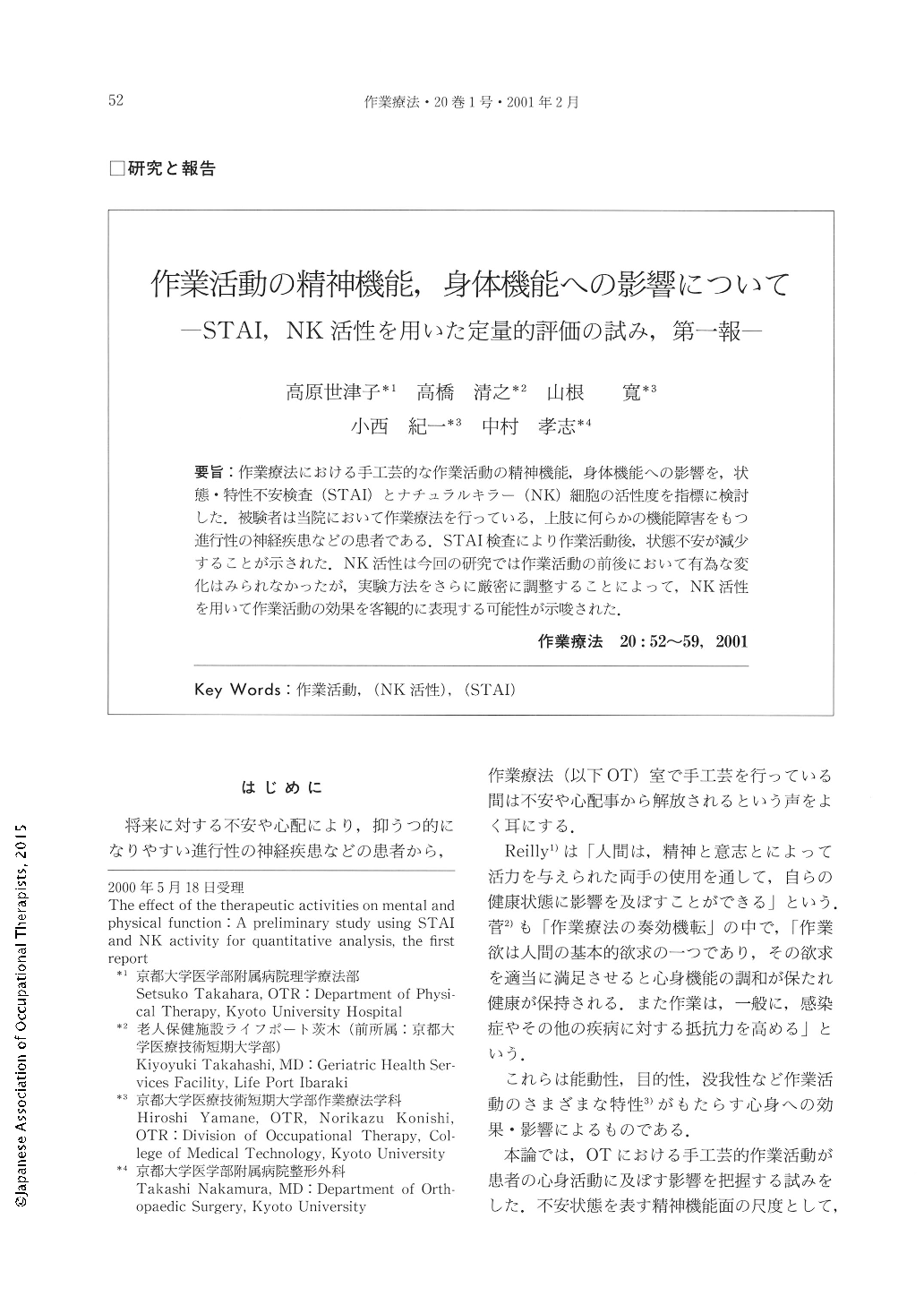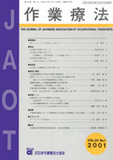Japanese
English
- 販売していません
- Abstract 文献概要
- 1ページ目 Look Inside
- 参考文献 Reference
- サイト内被引用 Cited by
要旨:作業療法における手工芸的な作業活動の精神機能,身体機能への影響を,状態・特性不安検査(STAI)とナチュラルキラー(NK)細胞の活性度を指標に検討した.被験者は当院において作業療法を行っている,上肢に何らかの機能障害をもつ進行性の神経疾患などの患者である.STAI検査により作業活動後,状態不安が減少することが示された.NK活性は今回の研究では作業活動の前後において有為な変化はみられなかったが,実験方法をさらに厳密に調整することによって,NK活性を用いて作業活動の効果を客観的に表現する可能性が示唆された.
One characteristic of occupational therapy involves the use of therapeutic activities. These purposeful activities are believed to contribute to the promotion of healthier minds and bodys.
The purpose of this study is to measure quantitatively the effect of the activities in occupational therapy. For this purpose, we used State-Trait Anxiety Inventory (STAI) and natural killer (NK) cell activity as indices. At the same time, we measured blood pressure and pulse rate. The subjects were fifteen patients who received occupational therapy in our hospital. They had functional disorder in their upper extreamities and most of them had progressive neurological illness. We checked STAI, NK activity, blood pressure and pulse rate before and after the activity. In the STAI, the state anxiety of the subjects reduced significantly (p<0.01) following the activities of occupational therapy. On the other hand, there was no change in NK activity. Among 15 subjects, nine of them came on foot, and six of them came on a wheelchair. The ambulatory group showed a high NK activity level even before the occupational therapy and resulted in little change after the therapy. On the other hand, NK activity level of the wheelchair group was 20% lower than that of the ambulatory group and resulted in 30% gain after the therapy. Edwards reported that an exercise raised the NK activity level; thus the above mentioned condition could be related with the difference of locomotion. It was suggested that a possibility that the effects of occupational therapy can be proved effective quantitatively by use of NK activity under more strict experimental conditions.

Copyright © 2001, Japanese Association of Occupational Therapists. All rights reserved.


